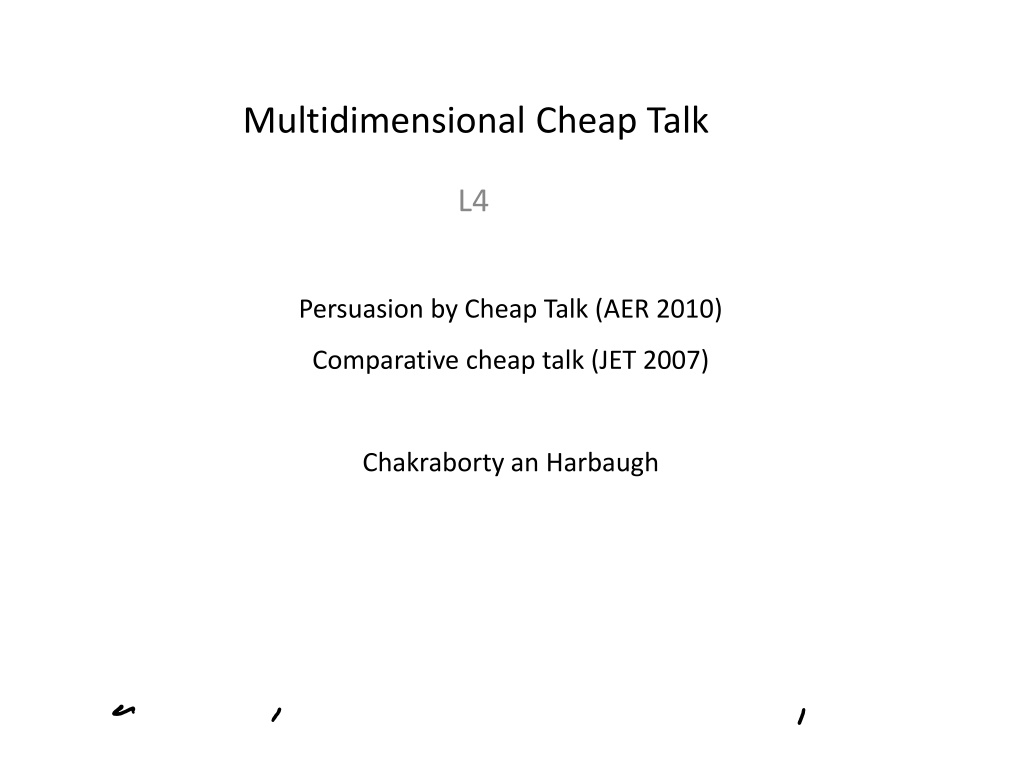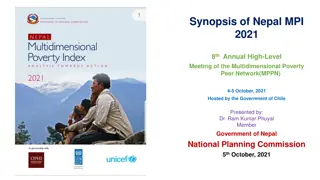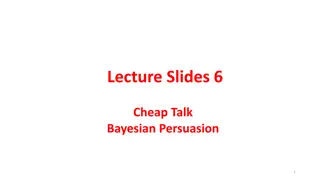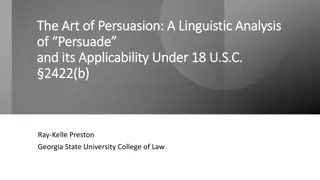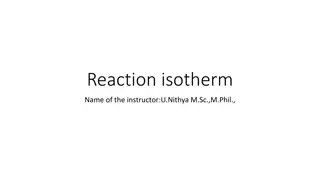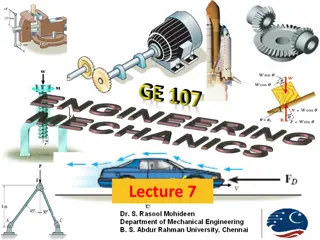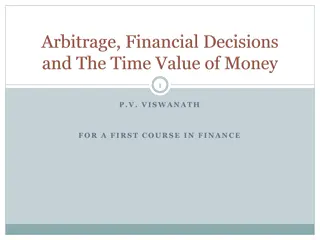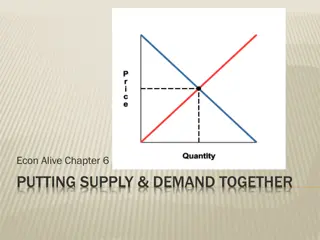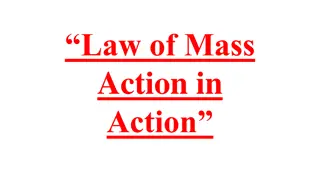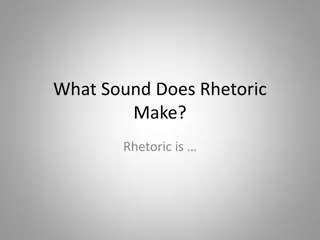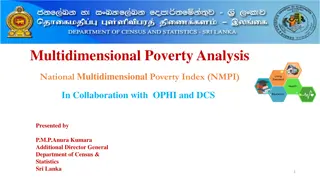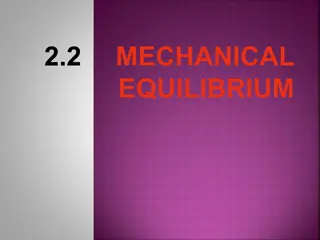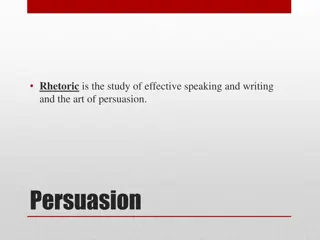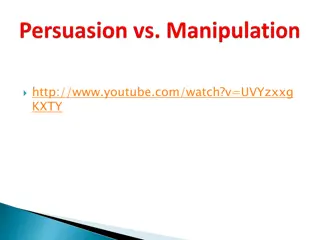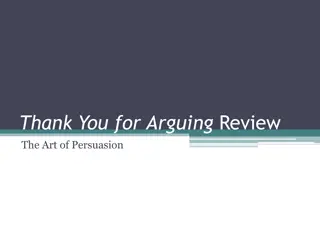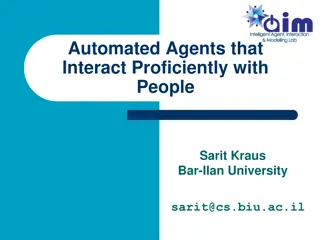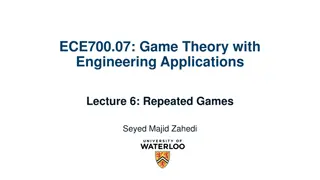Insights into Persuasion and Equilibrium in Multidimensional Cheap Talk
Explore the dynamics of multidimensional cheap talk, focusing on sender-receiver interactions, influential equilibrium, welfare rankings, and fragility to asymmetries. Lessons touch on bubbling equilibrium, influential equilibrium issues, welfare rankings preferences, and the impact of asymmetric preferences on equilibrium stability.
Download Presentation

Please find below an Image/Link to download the presentation.
The content on the website is provided AS IS for your information and personal use only. It may not be sold, licensed, or shared on other websites without obtaining consent from the author. Download presentation by click this link. If you encounter any issues during the download, it is possible that the publisher has removed the file from their server.
E N D
Presentation Transcript
Multidimensional Cheap Talk L4 Persuasion by Cheap Talk (AER 2010) Comparative cheap talk (JET 2007) Chakraborty an Harbaugh
Multidimensional Cheap Talk Two agents: Sender (S) and Receiver (R) Timing and actions: for each k=1, .K - Sender observes state , sends message - Receiver observes message , choses action k=1, K potential issues - R preferences - S preferences Examples: professor with K students, biased media outlet
Type independent preferences, 1 issue (dimension) Type independent monotonic preferences - Large biases in CS model - Type independent utilities One dimension: only non influential equilibrium Argument: Example: media outlet (S) and voter (R) - Type measure of honesty - Action voting effort Communication impossible to sustain
Bubbling equilibrium issues (uniform distribution) S preferences Next: 3 key lessons
Influential equilibrium (lesson 1) issues (uniform distribution), receiver S preferences (change to symmetric) Messages could be interpreted as ``rankings (Comparative cheap talk) With strict preference
Welfare Rankings (lesson 2) R (always) prefers informative equilibrium to bubbling (Blackwell) S preferences (quasiconvex, quasiconcave, linear) How comes that S might strictly prefer bubbling equilibrium? Examples of quasiconvex preferences
Fragility to asymmetries (lesson 3) issues (uniform distribution) Asymmetric preferences (change to symmetric) What if Influential equilibrium disappears
P1: Comparative Cheap Talk (JET 2007) K symmetric issues: - Separable S utilities, symmetric across issues - Symmetric prior distribution - Weak supermodularity (e.g., type independent) Results (K alternatives) - Complete or partial rankings (``top 3 ) supported in equilibriu - Almost fully revealing equilibrium with Asymmetric issues: - Example: type independent utilities (weak supermodularity) - Strict supermodularity (strict incentives in symmetric settings) - Influential equilibrium exist with sufficiently small perturbations Levy and Razin (ECMA 2007) non-existence of R equilibrium with large asymmetries
Persuasion by Cheap Talk (AER 2010) Assumption: Type independent, possibly non-additive utility of S Arbitrary asymmetries with respect to - utilities - distributions Main Results: - informative equilibrium exists with ``sophisticated messages - Full revelation along K-1 dimensions)
Asymmetry in utilities Spinning argument
Problem issues (uniform distribution), receiver Asymmetric S preferences Exists partition for which expected values fall on the same indifference curve
General ``spinning argument Sphere Function is odd if P: Continuous and odd function has an origin. (Borsuk-Ulam)
General ``spinning argument compact and convex, absolutely continuous, full support R preferences S preferences, type independent, continuous Observation: function is continuous and odd
General argument compact and convex, absolutely continuous, full support R preferences S preferences, type independent, continuous s.t. Borsuk-Ulam imply that for any there exists P: There exists an influential equilibrium Constructive argument How large is the set of PBN
Finer partition (lesson 4) Linear utility function For N=1,2,.. one can construct 2^N element partition, Probability mass of each element goes to zero Sender reveals all the information in K-1 dimensions
Nonlinear preferences: problem and solution Argument extends for strictly quasivonvex preferences
Substantive insight Partly revealing (influential) equilibrium - Exists! - R prefers revealing equilibrium to bubbling - S prefers revealing equilibrium if preferences strictly quasiconvex
Quasiconvex preferences: Desirability of quasiconvex preferences: - Partly revealing equilibria improve S (ex ante) welfare - For such preferences infinite partitions exist Former property important given easy commitment to ``not to talk
Benefits from randomness of ? Which economic settings give rise to quasiconvex preferences Let , When variation in is good? 1. Separable convex utility per each issue (advertising) Four settings: 2. Settings in which determines the outcome - unit demand (recommendation game)
Application : Recommendation game 2 objects, quality observed by a seller R: buyer, unit demand, outside option S: salesperson maximizes probability of selling Interpretation: - Professor with Ph.D. two students on the market, one position - Dealer charging a commission fee - Lobbyist advising a senator on several bill proposals
